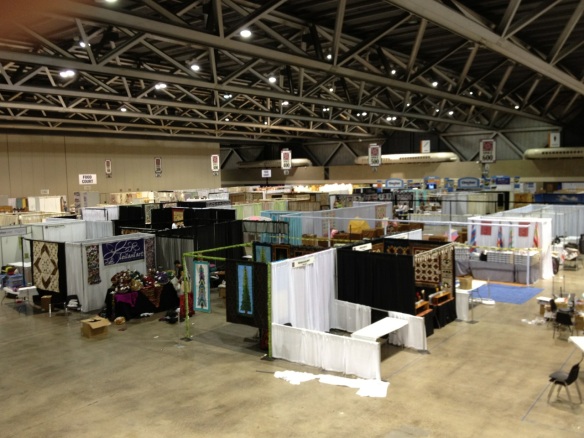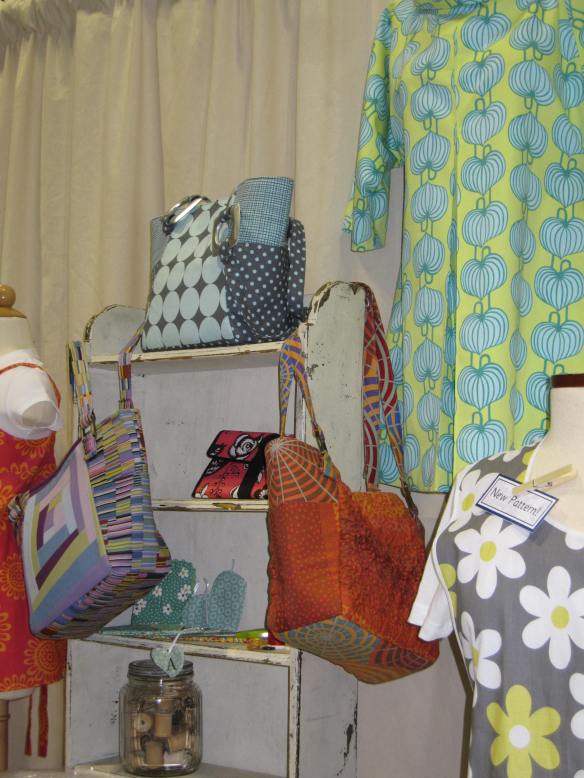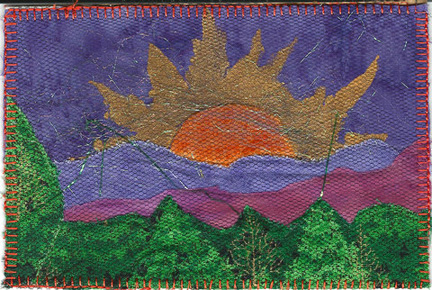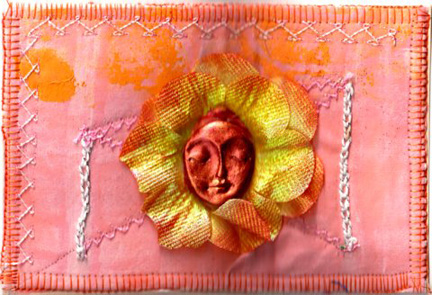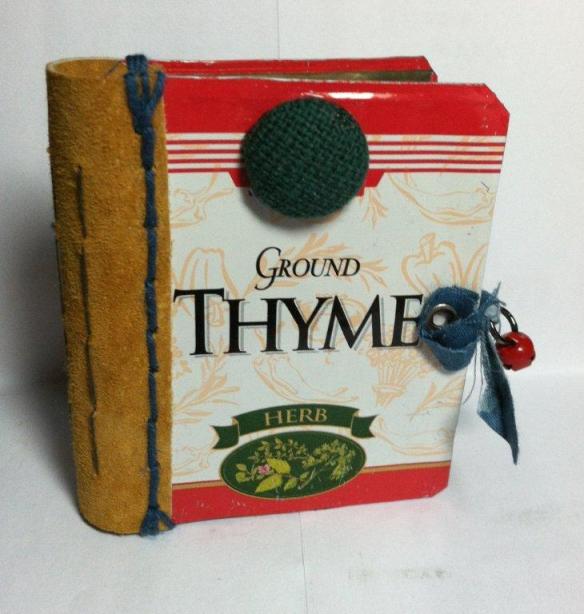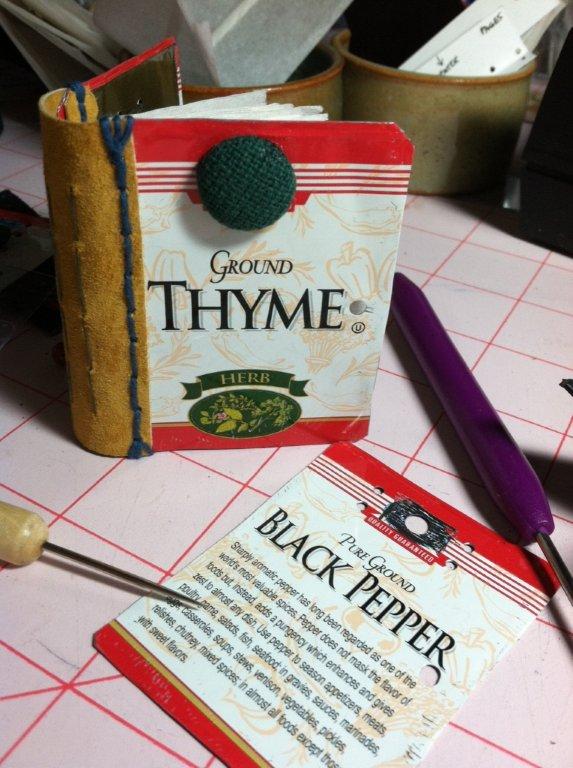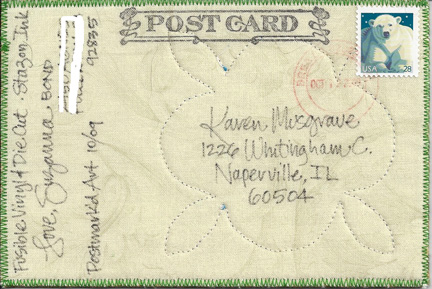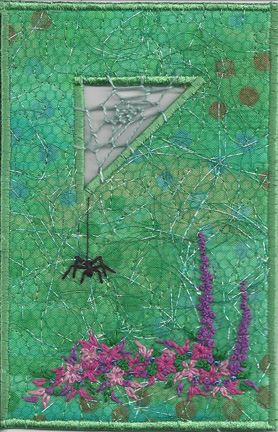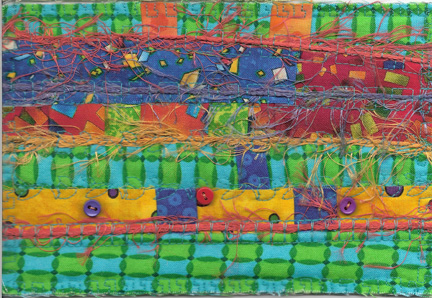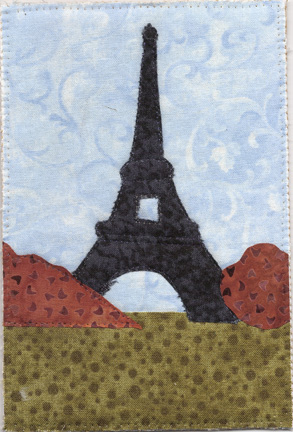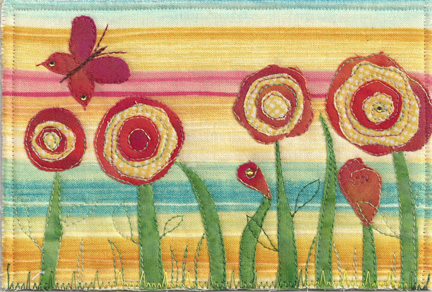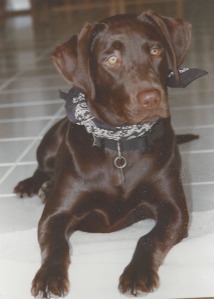Spring Quilt Market, the trade show for the quilting world, was in Kansas City, Kansas this year. I work for Indygo Junction, an independent pattern company based here in suburban Kansas City. I design patterns, make samples and do some office work.
Market was open May 18-19 at Bartle Hall, a large convention center in downtown Kansas City.
Wednesday, May 15th was “load in” day when everyone brings their product and booths and starts setting up.
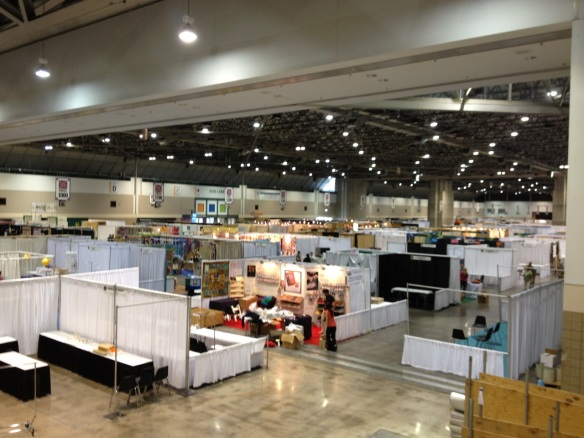 It comes in all forms from wooden crates delivered by fork lift to plastic tubs pushed on a dolly. Since we were so close to home this year we were able to forgo the wooden crates and bring a U-Haul truck. Once everything is in your space, the hard work starts — unpacking everything and assembling the booth.
It comes in all forms from wooden crates delivered by fork lift to plastic tubs pushed on a dolly. Since we were so close to home this year we were able to forgo the wooden crates and bring a U-Haul truck. Once everything is in your space, the hard work starts — unpacking everything and assembling the booth.

 For Indygo Junction, setting up the booth consists of dressing manikins, setting up the video monitors, making sure the pattern rack is stocked with all the new patterns and all the samples are all placed to their best advantage. Indygo Junction introduced more than 20 new patterns for this market. It’s a monumental job to get everything displayed properly. The booth was finally finished by Thursday afternoon. My newest pattern is the ruffled purse hanging on the manikin in this picture (#7).
For Indygo Junction, setting up the booth consists of dressing manikins, setting up the video monitors, making sure the pattern rack is stocked with all the new patterns and all the samples are all placed to their best advantage. Indygo Junction introduced more than 20 new patterns for this market. It’s a monumental job to get everything displayed properly. The booth was finally finished by Thursday afternoon. My newest pattern is the ruffled purse hanging on the manikin in this picture (#7).
Thursday night is one of my favorite parts of any Quilt Market — it’s called Sample Spree. Hundreds and hundreds of shop owners line up to attend this event. Many of the vendors set up tables and sell their products to shop owners in singles. The purpose of Market is to sell to shop owners at wholesale. Vendors set their own minimum order quantity. Indygo Junction sells 3 of each design, though at sample spree they will sell one. Purchasing just one pattern allows a shop owner to take it back to the shop and “test” it before their full order is shipped.
 My thanks to Peas in a Pod for sharing the above 2 photographs.
My thanks to Peas in a Pod for sharing the above 2 photographs.
Most of those people run straight for the Moda booth. I think it resembles the running of the bulls. Moda has at least twelve 8-foot tables stacked four feet high with their newest fabric. They sell out in under 30 minutes. It’s like a feeding frenzy. Then the people start to visit other booths. Vendors can also take part in the buying frenzy. Over the years I have amassed a beautiful stockpile of silk, tons of machine embroidery thread, beads, books (signed), fabric and Bali Pops. I go nuts! It lasts until 10:00pm and by then everyone is ready to drop.
Market officially opens on Friday morning. It’s so peaceful before they open the doors.
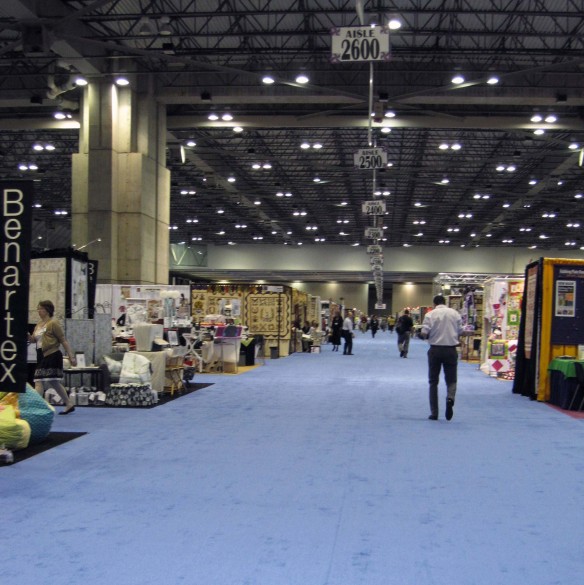 You have never seen so much fabric in your life! Every fabric company on the planet has a booth and some of them are a sight to behold.
You have never seen so much fabric in your life! Every fabric company on the planet has a booth and some of them are a sight to behold.
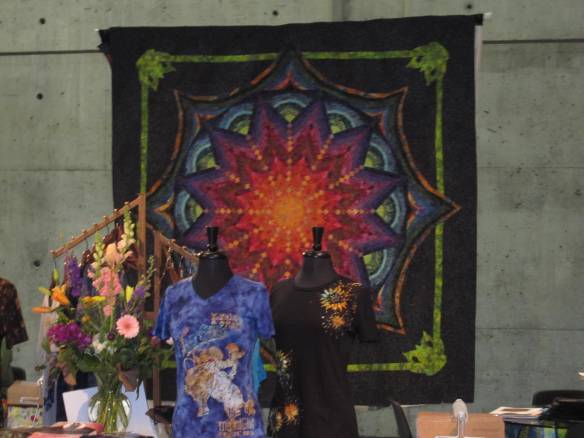 There are vendors of all sizes — Moda and every other major fabric company, to distributors and the one-person booths.
There are vendors of all sizes — Moda and every other major fabric company, to distributors and the one-person booths.
Part of my job is to walk the show looking for new and different products and techniques that Indygo Junction could carry or feature in a pattern. I know it’s a tough job but somebody has to do it! And I get samples to try out. So much fun! The small booths are my favorites. I love to see what the individual entrepreneur is doing. The creativity on display is amazing The other part of my job is to work in our booth talking with customers about our new patterns and books. That part is fun, especially seeing those repeat customers. I also get to meet celebrities like Nancy Zieman, Jane Sassaman and Pokey Bolton.
Market is open until Sunday at 4:00 p.m. when the reverse process happens. Everything that was so lovingly put in its place on display, now gets put in plastic tubs and bags for the trip home. It’s a lot faster to pack everything up than it was to unpack and set up.
 Market is over but the work isn’t. Now the administrative part of my job kicks in. One of my responsibilities in the office is the “Sample Closet”. That’s the place all of the samples live. And after each market I have to find room for all of those new samples that you saw in the Indygo Junction booth pictures. It’s always a tight squeeze.
Market is over but the work isn’t. Now the administrative part of my job kicks in. One of my responsibilities in the office is the “Sample Closet”. That’s the place all of the samples live. And after each market I have to find room for all of those new samples that you saw in the Indygo Junction booth pictures. It’s always a tight squeeze.
Market is always fun and hard work — and it’s always good when it’s over!


